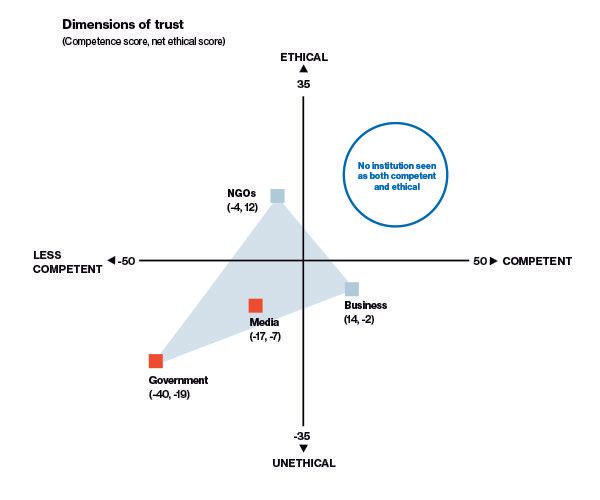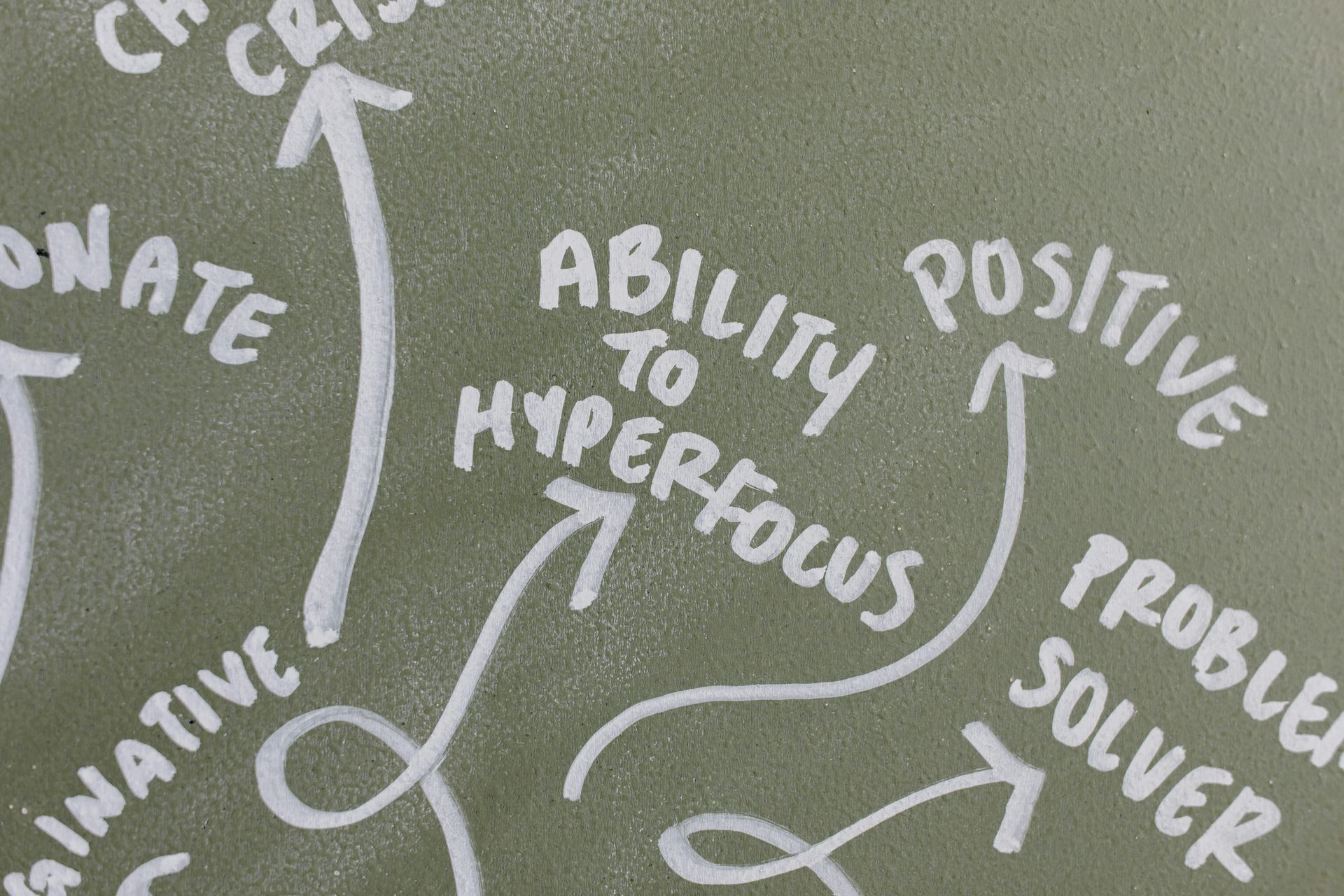Introduction
Organizations are undergoing an accelerated pace of cultural shifts. These changes often affect what drives competitiveness. Whether your company is a success story or is struggling to transform, this blog will give you insight into a long-term vision. In addition, we offer an effective way to adapt to today's changes in order to stay ahead.
The change
Systems Thinking Lens on the `Ways of Working`
The longer-term trajectory of business culture is aimed at re-shape the behaviour of companies as social units in the wider society. Whilst fairness and diversity cover half of the concerns. The `ways of working` are often associated with business-oriented concerns, even if it is work-life balance. Our suggestion is that improving the internal environment is only part of the long-term vision.
Many research publications indicate that businesses have a long way to go towards being voted as ethical by the public. Topics of distrust are often rooted in the `ways of working`. When people express concerns about being left behind, lack of cooperation, or empty words, these are symptoms of a gap in expectations. It's fair to assume that people expect change to be more systemic.
Gallup survey says that “employee engagement decreased globally by two percentage points, from 22% in 2019 to 20% in 2020”. Putting aside the trend, the suggestion that approximately 80% of employees are disengaged is staggering.
At the same time, researchers indicate that "90% of good ideas don't come from the executive suite" -
Handling Complexity with Professor Richard Jolly, London Business School.
One can draw two conclusions from this bigger picture:
- Businesses are missing out on good ideas
- Most popular approaches for improving engagement are ineffective
It is easy to imagine that employees perceive businesses as dancing around and paying lip-service to employee engagement. This could be one of the key subliminal reasons why the public sees businesses as unethical. Surveys have not unpacked this perspective.
Let’s be radical and do something about this. Below we discuss that being radical does not actually entail any drastic organizational disruptions.
Two Big Questions for The `Ways of Working` Change ?
Suppose that ‘ways of working’ are more than a matter of process. The opinions expressed below are formulated on the view that a
better environment is evidenced by the state of organizational culture and information flow.
Three separate considerations feed upon each other and affect ‘ways of working’:
- Engagement approach
- Operating models (Remote first, Geo Distributed Teams, Outsourcing, etc.)
- Process methodologies (e.g. software delivery, project management and other)
Irrespective of the considerations and change models, there are two big questions:
- What is culture worth?
- How do we know that investment into a particular way of doing things will improve company goals?
Perspectives on these questions will influence if the change will go deep enough, and if it happens fast enough.
Measuring what culture is worth
Measuring the value of culture through indices related to "return" is possible. The concept of organizational culture is just as fundamental as the life of an individual. However, it is possible to infer a minimal opportunity cost of not giving this area serious consideration.
The formula:
- Take all critical employees and assume they leave within N years as a disruptive event, but before the "normal" turnover (if average employee tenure were
4 years, then you might take 1-2 years as a disruptive staff turnover event)
- Calculate the cost of disruption
- lost momentum
- cost of finding similar people
- cost of repeating the cycle every N years
It is well recognised that employees leave for a multitude of reasons. Also, it has become fashionable to single out “bad” managers. In our view, the reasons are more systemic in nature. People leave environments that lack a culture of growth - see our
prior blog on this topic. In short, employees in large organizations can actually have a great team leader and direct line manager. However, these leaders are often ineffective to change anything.
The measure of the value of culture will change no more than updates to the company's strategy. The importance of this measure is psychological. It is unlikely to influence the way improvements are made, but it is necessary for demonstrating to employees and shareholders how serious the company is about achieving real outcomes - “put your money where your mouth is” so to speak. If culture is considered as a soft consideration (not measurable), hearts and minds will never be won.
If you can demonstrate the seriousness of the intent, the bulk of the challenge is to “walk the talk”. This is where many organizations fail because investments of effort miss one critical point. Next section explains how to boost organizational culture change.
Invest into right change
So, what should be the first change in pursuit of better ‘ways of working’?
Let’s define key criteria that will reveal the answer:
- Lagging indicators and discreet surveys cannot drive systemic changes; More surveys simply lead to more intervention;
- Management cannot do the change on their own, and team leads cannot be any more effective without the change to concentration of power;
- It is necessary to have capability for a very fast and cheap way of identifying and testing hypotheses. Cultural change is not going to be linear.
Even though the topic may be complex, the answer to “where to begin” is quite simple - the “pipeline”. Examples of pipelines:
- In the IT world, it is the automation of the CI/CD pipeline
- In Sales that would be leads generation and management
- Automation in logistics
Employee feedback management is not any different. This capability provides a real-time view of morale and a concrete practical understanding of what affects people. This is the very first and foundational investment any company should make. If implemented correctly, the feedback pipeline is more than just a channel for thank you’s and reflections on challenges. Value is represented as data points that are used to make decisions based on evidence.
By unlocking the power of direct and genuine feedback from employees, companies gain a critical opportunity- speed and agility in discovering and testing hypotheses. This is what true engagement actually looks like - grassroots need to participate in formulation of hypotheses and work as a collective to prove what works, or not, within the overall system. It is this collective brain power (the “90%” we mentioned in systems thinking lens section) that will ensure that organization is investing into right change.
Coincidentally, this is exactly what horizontal leadership is about. People have been asking for less managerialism. We know that command-and-control is not a path into the future because it is inherently about delegation - it is slow, does not unlock great ideas, and creates brittle structures.
Horizontal leadership is a network of resourceful humans that delivers fast ideas generation and experimentation. It only works, however, if concentration of power is re-aligned to unblock real-time and fearless feedback. Whilst
autonomous team may be a myth, the network effect of ideas and evidence-based experimentation are the ones that will ensure that organizations do not fear to experiment, fail fast and try something different.
Setting Up Psychologically Safe Feedback Pipeline
Effective feedback pipeline is the one that embraces two core principles -
radical transparency and
psychological safety.
This is what you need to consider when choosing the solution:
- Choose a solution that gives people the ability to “push” feedback in a psychologically safe way
- Solution should be integrated into daily communication tools (for instance Slack or Microsoft Teams)
- The stream of feedback posts should be measurable - these data points are key for enabling evidence-based decisions
- Chosen solution should be customizable with any context so that people have the ability to classify feedback
- Everyone should have exactly the same view and access to infographics
- It should be possible to drill-down into data points by theme, team, activity and compare across any time period
- It should be possible for people to “push” feedback about future expectations - measuring ongoing or retrospective experiences is not enough to form a complete picture
Neelix Team Engagement solution is designed from ground up to cover all these requirements. It is a turn key solution that avoids the need to re-engineer the wheel. Hit the ground running with transition to horizontal leadership and grassroots driven changes to the ‘ways of working.








